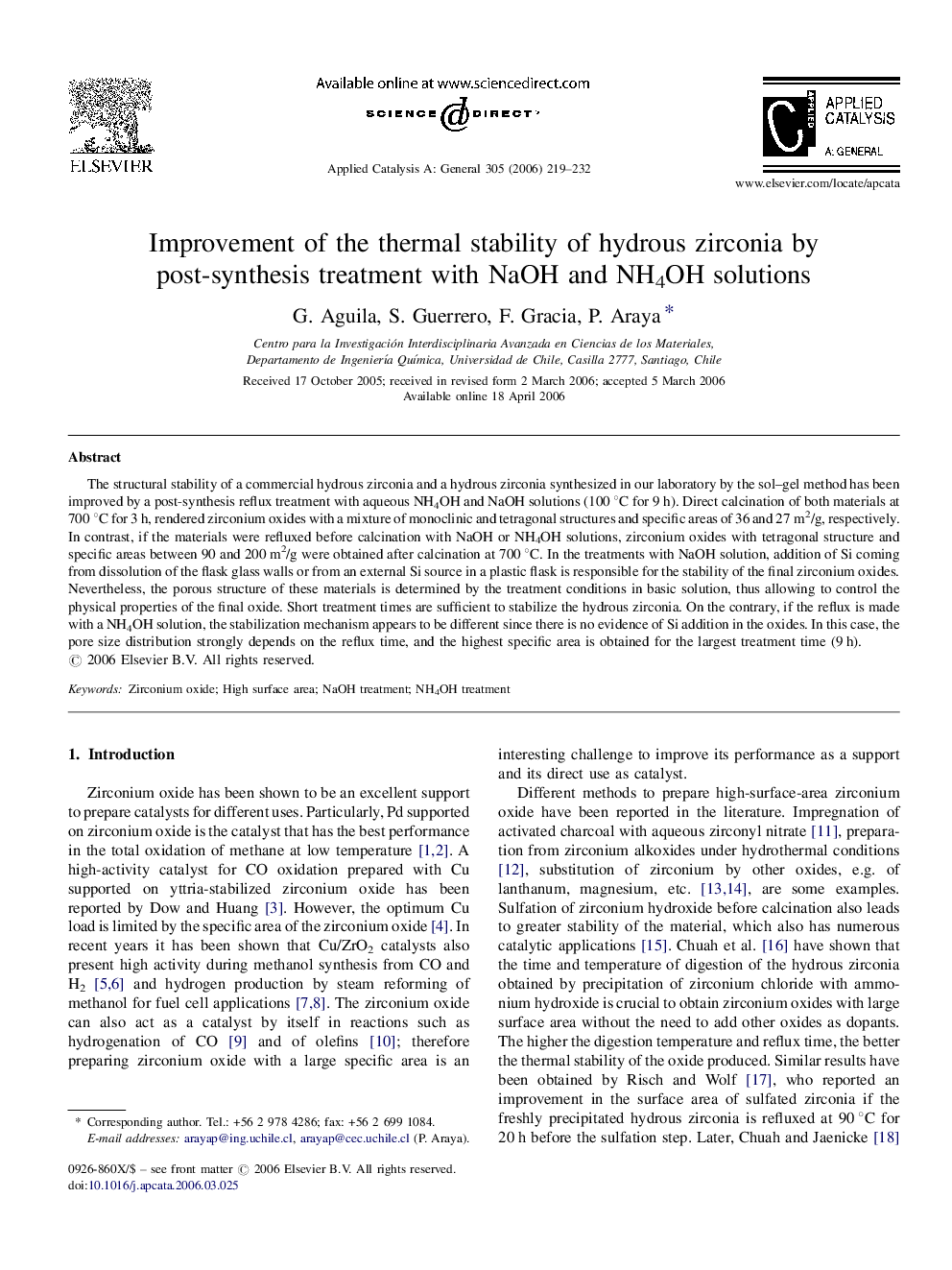| Article ID | Journal | Published Year | Pages | File Type |
|---|---|---|---|---|
| 44445 | Applied Catalysis A: General | 2006 | 14 Pages |
The structural stability of a commercial hydrous zirconia and a hydrous zirconia synthesized in our laboratory by the sol–gel method has been improved by a post-synthesis reflux treatment with aqueous NH4OH and NaOH solutions (100 °C for 9 h). Direct calcination of both materials at 700 °C for 3 h, rendered zirconium oxides with a mixture of monoclinic and tetragonal structures and specific areas of 36 and 27 m2/g, respectively. In contrast, if the materials were refluxed before calcination with NaOH or NH4OH solutions, zirconium oxides with tetragonal structure and specific areas between 90 and 200 m2/g were obtained after calcination at 700 °C. In the treatments with NaOH solution, addition of Si coming from dissolution of the flask glass walls or from an external Si source in a plastic flask is responsible for the stability of the final zirconium oxides. Nevertheless, the porous structure of these materials is determined by the treatment conditions in basic solution, thus allowing to control the physical properties of the final oxide. Short treatment times are sufficient to stabilize the hydrous zirconia. On the contrary, if the reflux is made with a NH4OH solution, the stabilization mechanism appears to be different since there is no evidence of Si addition in the oxides. In this case, the pore size distribution strongly depends on the reflux time, and the highest specific area is obtained for the largest treatment time (9 h).
